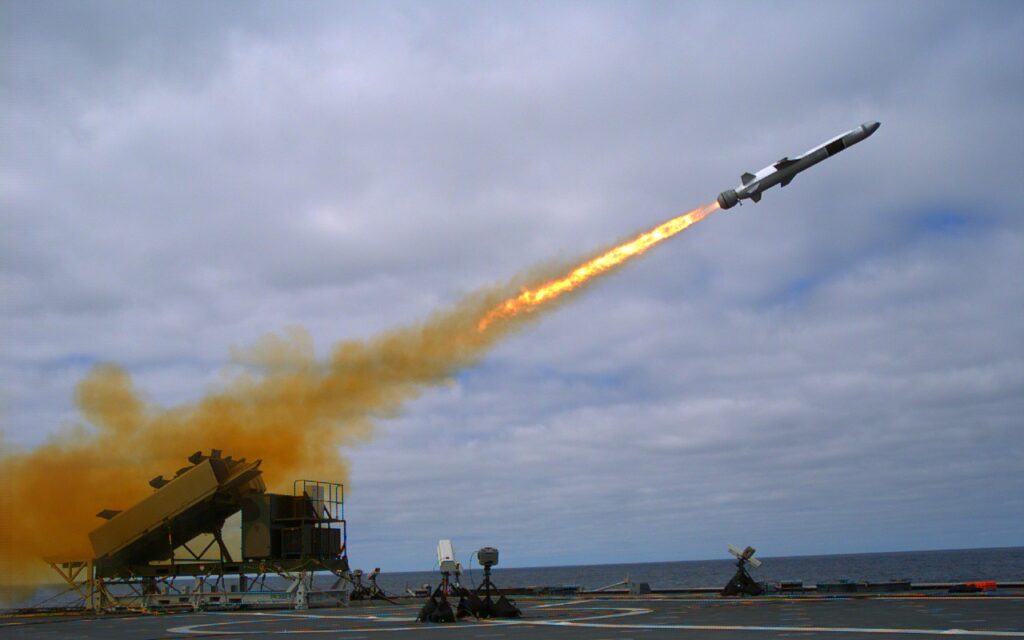Kongsberg, Raytheon Plan Missile Production In Arizona
Posted on

The LCS Coronado test-fires a Norwegian Kongsberg missile.
FARNBOROUGH: In a clear effort to defang critics who might slam their product as — gasp — foreign, Raytheon and the Norwegian defense firm Kongsberg told reporters here they will build a production line in Tuscon, Ariz. to build advanced missiles for the U.S. Navy.
The first missile to get built should be the Naval Strike Missile, but the plant should be able to handle the closely-related Joint Strike Missile, built for the F-35 A and C fleets. Kongsberg and Raytheon are eagerly targeting the US market for both missiles. The JSM is the first missile designed with the F-35 in mind and Norway has spent $1 billion putting it through research, development, test and evaluation.
The two companies will “assemble, integrate and test” the Naval Strike Missile (NSM) and build its launchers in the United States. The NSM can be packed into a standard shipping container and placed aboard a wide array of ships, noted Thomas Copeman, a top man in Raytheon Missile Systems and former commander of Surface Naval Forces for the U.S. Navy. This is clearly intended to take advantage of the Navy’s focus on what it calls Distributed Lethality, a push to arm virtually all naval vessels.
A key part of the two companies’ push is designed to get missiles aboard the Littoral Combat Ship fleet. The Navy tested NSM from USS Coronado in September 2014understand that the Littoral Combat Ship could carry twice as many NSMs –eight –as Lockheed Martin’s Long Range Anti-Ship Missiles (LRASM) or Boeing’s venerable Harpoons — four. The NSM is light, weighing in at only 985 pounds.
The missile is also tested and already deployed, in use by Norway and Poland.
In the long run, however, the JSM looks to be the larger market for the two defense companies. It can be used on all 1,763 F-35As the US Air Force plans to buy, as well as the 530 F-35Cs that the Navy and Marine Corps should buy.
How much did Norway do to make this missile fit the F-35? They changed its shape so it would fit in the bomb bay. It’s designed with a “unique thermal management system” said Pal Brattlie, executive vice president for Kongsberg Defense Systems, “as we understand it’s quite hot in the F-35’s bomb bay.” The missile boasts passive sensors, Brattlie said, so it does not emit and attract countermeasures, in keeping with the Joint Strike Fighter’s Low Observable approach to warfare.
Subscribe to our newsletter
Promotions, new products and sales. Directly to your inbox.
